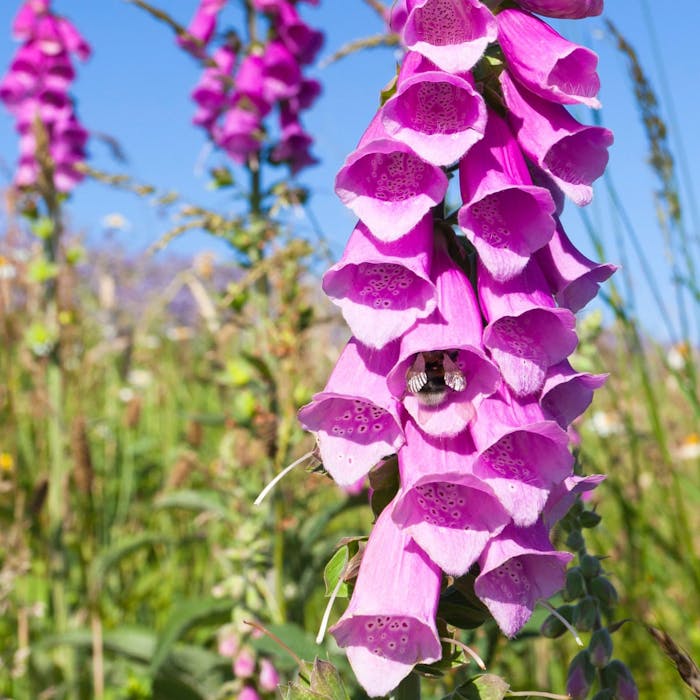
The foxglove - pretty but poisonous, unless you're a medic!
The foxglove is a very familiar wild flower that can also look at home in an old-style cultivated cottage garden environment. It is much-loved by bees and has been selectively bred into many colours by gardeners. It is also both poisonous and life-saving - a source of drugs used for heart conditions.
Foxglove (Digitalis purpurea) produces a spike of purple-pink flowers between June and September. It can grow up to 2m tall and is found in heathland, woodland edges and gardens. This pretty flower is also a valuable source of nectar.
The origins of the name foxglove are unclear, but can be traced back to the Anglo-Saxon period. It is thought the ‘glove’ part of the name is simply due to the flowers looking like glove fingers. Less certain is the connection to foxes. It might be because the flower is often found growing close to the earths where foxes raise their young.
A single foxglove can produce over a million seeds. Foxgloves are either biennial, producing a rosette of foliage in the first year followed by flowers in the second year after germinating, or perennial, flowering every year. For garden borders they provide a valuable structural element. The taller species are excellent for adding height and interest by cutting through more loosely structured plants.
Foxgloves are the source of the medicine digitalis, which acts upon the heart beneficially if used in very precise doses, but is poisonous if consumed directly from the plant. Foxglove plants contain toxic cardiac glycosides. Ingestion of any parts of the plant (and often the leaves usually as a result of misidentification for comfrey, Symphytum officinale) can result in severe poisoning. Symptoms include nausea, headache, skin irritation and diarrhoea.
Further reading
Links to external websites are not maintained by Bite Sized Britain. They are provided to give users access to additional information. Bite Sized Britain is not responsible for the content of these external websites.
